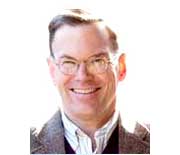Sejong City and decentralization
July 1, 2012 marked a major change in Korean geography: Sejong City became the first “special autonomous city” in Korean history and the 17th province-level administrative division.
This gives it equal status to Seoul and other provinces and cities. Sejong City’s new status is important because it is the first planned city to obtain the designation. Since the founding of the Republic of Korea, Busan, Daegu, Incheon, Gwangju, Daejeon, and Ulsan have all became independent of their surrounding province after their population crossed the one-million mark.
By contrast, the population of Sejong City, most of which lives in rural areas surrounding the construction site, is 122,263, but it is predicted to grow to 500,000 by 2030. Twenty thousand people will move into new apartments in the city this year.
Sejong City was given “special autonomous” status because it will serve as a national government administrative center. All of the major centers of power -the Blue House, the National Assembly, and Constitutional Court _will remain in Seoul. A number of government ministries and agencies will move to Sejong City, making it a supporting administrative center for Seoul, rather than a center with its own locus of power.
The origins of Sejong City go back to 2002, when candidate Roh Moo-hyun promised to build an administrative capital as part of broader plans to decentralize economic and political power in Korea. After becoming president Roh followed through on his promise to move the capital from Seoul to Sejong City as part of broader plans to promote decentralization and balanced development.
Roh was not the first president, of course, to take an interest in decentralization, but he was the first since democratization in 1987 to give the issue high priority. In 2004, the Constitutional Court struck down Roh’s plan to move the capital, and he decided instead to make the city a government administrative center.
In June, the population of the Republic of Korea passed 50 million, making Korea the seventh member of the “20-50 club” of nations in the world with a per capita GDP over $20,000 (by PPP, or “purchasing power parity”) a year and a population of at least 50 million. This is a very select group: The United States, Japan, Germany, the United Kingdom, France, Italy – and now Korea.
All of the others have a history of great power, status and colonial expansion. Considering Korea’s recent experience with colonial rule, war, and continuing national division, joining the “20-50 club” is a remarkable achievement.
Ironically, Korea’s success casts new light on its glaring failures. One of these failures is the extreme concentration of economic and political power in the Seoul area. The U. S., Germany, and Italy have a number of centers of economic and political power. New York versus Washington, Frankfurt versus Berlin, and Milan versus Rome come to mind. The U.K., France, and, to a somewhat smaller degree, Japan have economic and political power concentrated in the capital city.
No degree of concentration compares to that found in Korea. The Seoul National Capital Area (SNCA) of Seoul, Incheon, and Gyeonggi Province have all the branches of political power, almost all major banks and corporations, all major media outlets, nearly all major universities, and nearly all major cultural institutions. With a population of almost 24 million, the SNCA has about 48 percent of the population of Korea and is projected to have more than 50 percent by 2020.
The Great East Japan Earthquake in 2011 revealed the limits of centralization as the Japanese contemplated the consequences of a similar earthquake hitting Tokyo. The greater Tokyo area is home to 25 percent of the Japanese population, and Tokyo is the political and economic center of Japan.
A devastating earthquake in Tokyo would cause tremendous loss of life and devastate the Japanese economy. Talk of moving the capital from Tokyo began before the earthquake, but has become more serious since. Already people are moving from the Tokyo area to safer areas in Western Japan.
Korea needs to take a hard look at the level of centralization in SNCA. By the standards of the “20-50 club” and most other advanced democratic societies, centralization in the SNCA is extreme and possibly dangerous. It saps regions of people and resources and forces residents to struggle with expensive housing and long commutes. The gap between the SNCA and the regions will only grow as the population ages and depopulation undermines local and regional economies.
The official start of Sejong Special Autonomous City creates the danger that, as construction finishes and government offices move in, that people will become complacent about decentralization. Instead, Sejong City should be the catalyst for a new and sustained debate about the urgency of decentralization. <The Korea Times/Robert J. Fouser>
*The writer is a professor at the Department of Korean Language Education at Seoul National University.




